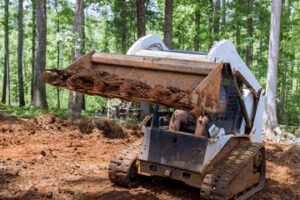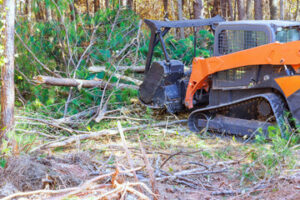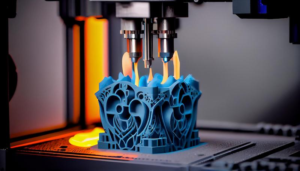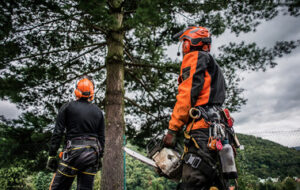Hiring Modesto House Painters can be an excellent way to enhance the look of your home. But, it is important to find a reliable painting company that is licensed and insured.

The best way to find a house painter is through personal referrals. Ask friends, neighbors, and family for recommendations.
A fresh coat of paint can transform your home and increase its value. A professional house painter brings experience and expertise to the project, ensuring it is completed efficiently and accurately. This will save you time and money while delivering superior results. Before hiring a house painting contractor, look at their portfolio to assess their work quality and consistency. Ask about their years of experience and areas of expertise, as well as any specialized training or certifications they may have.
Local house painters understand the climate and weather conditions of your area, which influences the color choices and finish options available for your home’s exterior and interior. They also know the best preparation techniques for specific surface types and architectural styles to ensure long-lasting results. In addition, they can help you choose colors that complement the surrounding environment and express your personal style.
Professional house painters have years of experience and extensive technical skills. Their attention to detail and ability to problem-solve make them a valuable investment for any home improvement project. They are also familiar with all applicable building codes and regulations to ensure your project is compliant.
House Painters should be able to effectively communicate with homeowners and other contractors throughout the project. They should be able to answer questions about the project, explain the work process, and provide a detailed quote before beginning the job. They should also be able to create a clean workspace by moving furniture away from walls and covering or removing items that could get damaged by paint splatters.
A quality painting job requires meticulous preparation to ensure the new coating adheres and lasts. Inexperienced painters often skip this step, which can lead to premature peeling and bubbling. Professional painters use high-quality tools and materials to prepare surfaces, and they are trained to recognize common issues such as stains, water damage, and mold growth.
It is important to choose a house painting company that has a good reputation and is licensed. The company should have both general liability and worker’s compensation insurance. The former protects you if the painter damages your property during the project, and the latter covers workers who are injured on the job. In addition, a reliable company should be able to provide proof of their licensing and insurance when asked.
Transparency
House painters should be transparent and up-front with their prices. They should explain their work process, materials and costs and provide a detailed contract. They should also be willing to negotiate pricing, as they may be able to offer discounts on larger projects or during off-peak seasons. They should be able to provide references and photos of previous projects. This allows you to assess their expertise and experience before making a decision. If they are reluctant to provide these details, it may be a sign that they are trying to pressure you into hiring them.
Legitimate house painters will not employ the bait-and-switch tactic, which involves displaying impressive portfolios and promising top-tier service but then failing to deliver on their promises. When choosing a painter, trust your instincts and ask questions when things don’t add up. If you feel like something is too good to be true, it probably is.
Painting is a large investment, and it’s important to choose a contractor you can trust. Reputable house painters prioritize open communication and will be happy to discuss your concerns and answer any questions you might have. They will also be willing to discuss any repair needs and provide clear justifications for additional work. They will also explain their pricing structure and avoid using misleading marketing tactics such as limited-time offers or “deals” that may be difficult to understand.
When you’re looking for a house painter, you should always request references and visit their past projects. This will help you determine whether they’re a suitable match for your project and will enable you to see their work firsthand. You can also ask for quotes from several contractors and compare prices to establish a reasonable price range. Often, painting companies are willing to negotiate their prices, especially if you are flexible about the scope of the job or are able to agree on a timeline before starting the work.
A professional house painter can address a variety of surface challenges, including water stains, mold and mildew, peeling paint, and uneven textures. They can also help you select the right colors for your home, creating a color scheme that is both cohesive and complementary. They can recommend secondary and tertiary hues to complement primary colors, and they can teach you how to use the color wheel to create a balanced palette that enhances your home’s aesthetic.
License
Professional House Painters have extensive knowledge of various painting techniques, surface preparation, and color selection. They are also able to identify any underlying issues that may affect the results of your project and recommend solutions. They can help you achieve the look and feel that you desire for your home, including a cozy and warm feeling or a modern and sophisticated style.
A good House Painter is able to provide you with a comprehensive quote for your project that includes a detailed scope of work, materials and labor costs, and a completion timeline. This will ensure that both parties understand what to expect from the project and minimize misunderstandings. They should also have worker’s compensation insurance in case a worker gets injured while working on your project.
Local House painters typically have a better understanding of the local conditions and building structures. This enables them to provide you with more accurate estimates and complete the job in a shorter time frame. In addition, they are likely to have more familiarity with local permit requirements and regulations.
In most states, house painters are required to have a license in order to conduct business. This process involves passing an exam and providing proof of insurance. Some states also require a contractor bond as part of the licensing process. This type of bond protects consumers against any damages caused by the house painter and provides them with a legal remedy if they fail to fulfill their contractual obligations.
When choosing a House Painter, it is important to find one with an excellent track record. Check online reviews and ask friends and family for recommendations. You should also consider looking at each painter’s portfolio to see their previous work. Make sure that the photos you see match the description provided by the company.
Mold and mildew stains, a telltale sign of water infiltration, are common on the exteriors of many homes. In addition to impacting the appearance of a building, these stains can cause health problems. High-quality House Painters are familiar with the most effective treatments for these issues and are able to spot them before they spread. They can address a variety of issues, including moisture damage and structural integrity, to ensure a smooth and seamless finish.
Insurance
Whether you’re hiring a house painter for your home or a commercial project, you want to make sure they have appropriate insurance policies. Since painting is a physically demanding job, there are a number of risks involved. For example, a painter could fall off a ladder and damage a client’s property. This is why it’s important to check for general liability insurance and workers’ compensation insurance.
In addition to these basic types of insurance, a reliable house painter should also carry professional liability insurance and inland marine insurance. Professional liability insurance (sometimes referred to as errors and omissions insurance) covers claims related to mistakes or negligence in their services. This type of insurance can help cover legal fees and settlements in the event of a lawsuit.
Another essential type of insurance is inland marine insurance, which covers damage to a painter’s equipment or materials while in transit. This type of insurance is particularly important for painters, as they often work with expensive tools and equipment. It’s also important to note that a painting contractor may need additional insurance policies, depending on the project. For example, if they’re working on a construction site, they’ll need builder’s risk insurance to protect against unexpected events like fire or severe weather that could cause damage to the project.
When selecting a house painter, it’s also important to ask about their warranty policy. Many legitimate painting companies offer guarantees for their work, which can give you peace of mind that they stand behind the quality of their services. Guarantees can include a timeliness guarantee, which promises to complete the project within a specified timeframe. They can also include a durability guarantee, which offers reassurance that the paintwork will last for a certain period of time.
If a house painter doesn’t have the required insurance policies, it’s best to move on and find someone who does. Not only will this protect you from potential liabilities, but it will also ensure that the painter is competent and qualified to handle your project. It’s also crucial to read reviews from past clients to get an idea of their work ethic and customer satisfaction levels.








